Thomas E. Wilson
Thomas E. Wilson was the founder of Wilson Sporting Goods and the Wilson and Companymeatpacking company.
In 1917, he was hired to take over the management of a failing meat packing company in Chicago, which was subsequently named after him, making Wilson & Company the 3rd largest meat packing company in the country. In 1926, he created one of the most recognizable brand names in the world, known as Wilson Sporting Goods. He served as President and Chairman of the Board of Wilson & Co for 35 years.
Wilson was born on a farm near London, Ontario, Canada, on July 11, 1868. He went to the United States as a young man, working as a railroad car checker in the bustling stockyards of Chicago. He spent over 25 years working his way up the ranks of Morris & Co, becoming Vice President of the packing house in 1906, and president in 1913 following the death of its founder, Edwin Morris. In 1916, bankers succeeded in luring Wilson away from Morris & Company, in order to run a failing New York-based meat packing company called Saltzberger & Sons (S&S). The company's name changed to Wilson & Co., and its headquarters moved to Chicago's Union Stock Yard. It soon joined Armour and Swift at the top of the American meat industry.
While at Saltzberger he ran the Ashland Manufacturing Company which used animal by-products to create tennis racket strings. He renamed the company the Thomas E. Wilson Company and aggressively increased the sports line. The company is nowWilson Sporting Goods.
Thomas Wilson built the company rapidly into one of 50 largest industrial corporations in America by the end of 1917. Wilson was an important influence on the branding of processed meat products, having developed many of today's popular value added beef and pork products. Wilson & Company was responsible for introducing numerous well-known brands, such as Wilson Certified Hams, Wilson's Continental Deli and Wilson's Corn King. He was an important figure in both the American Meat Institute and in the sporting goods industry. He died in 1958.
HistoryEarly History
Wilson Sporting Goods was incorporated in 1913 as the Ashland Manufacturing Company, and was originally established to find unique ways of using slaughterhouse byproducts of a nearby meat-packing firm, its parent company owned by Sulzberger and Schwarzchild. By 1914, the company was producing such items as tennis racket strings, violin strings, and surgical sutures, and had expanded into baseball shoes and tennis racquets. In 1915, the company appointed Thomas E. Wilson as president, and from that moment onward nothing was the same. Wilson, a hard-headed businessman who saw the potential of a sporting goods company, broke away from the parent firm of Sulzberger and Schwarzchild, began to focus exclusively on the manufacture of sporting and athletic equipment, and then named the company after himself in 1916.
Thomas Wilson immediately started to expand the operations of his company by acquiring the Hetzinger Knitting Mills and a small caddie bag company. Hetzinger was purchased for the purpose of producing high-quality athletic uniforms, while the caddie bag company's extensive line of luggage products was reduced to the manufacture of golf bags alone. Basketballs and footballs were also added to the company's rapidly growing list of items for sale. In 1917, the company was so confident in the quality of its product line that it announced a two-year unconditional guarantee on all of its products. During the same year, the company began manufacturing golf clubs and football helmets. Although Thomas E. Wilson left the company in 1918, no interruption occurred in either the manufacture of its products or the growth of its revenues. By the end of the year, sales reached the $1 million mark, an enormous amount of money for a company that had been in existence for only a short time. The company closed out the decade by acquiring Chicago Sporting Goods Company, a manufacturer of uniforms, by reaching an agreement to supply all the equipment for the Chicago Cubs baseball team, and by hiring Arch Turner, one of the prominent craftsmen in the leather industry. Hiring Turner was prophetic since his innovative designs for the leather football had a profound influence on the development of the game.
The decade of the 1920s was one of the most successful and most innovative periods for the company. In 1922, Wilson introduced the Ray Schalk catcher's mitt, which from that time onward set the standard for design, comfort, and padding within the baseball industry. During the same year, the company established its advisory staff of athletes, with the famous golfer Gene Sarazen as its first member. The most influential member of the advisory staff, however, was the football coach of Notre Dame, Knute Rockne. Rockne worked with Wilson to develop a new double-lined leather football, and the first football that was valve inflated. These two developments were instrumental in helping Rockne to develop the modern passing game in college football. In addition, Rockne and Wilson developed the first waist-line football pants with pads that could be removed, thus providing the player with the ability to move more freely. Wilson was also making a major impact in other areas of sports as well, such as the cardboard tube containers for tennis balls that soon became the standard packaging for the industry.
When Knute Rockne died in a plane crash in 1931, Wilson was able to form a close collaboration with Dana X. Bible, the football coach at the University of Nebraska, in an attempt to continue its development of innovative football products. And, although Bible was able to help Wilson develop helmets and shoulder pads, the company was unable to match the degree of influence on the game achieved with Rockne during the 1920s. As a result, company management decided to focus on the game of golf.
In 1932, the company developed the R-90, a sand wedge golf club inspired by Gene Sarazen's victory in the 1932 British Open. That year alone, Wilson sold over 50,000 of the sand wedge clubs. One year later, the company introduced a design that distributed the weight of the club in the toe of the club's head, anticipating the future design of what was to be termed "perimeter weighting." In 1937, Wilson signed the soon-to-be-famous Sam Sneed as a member of the firm's advisory committee, and introduced the Blue Ridge Golf Clubs, named after the region in Virginia where Sneed was born. In 1939, Wilson achieved a major innovation in the design and manufacture of golf clubs with its ability to bond different layers and types of wood together to produce a criss-cross pattern that resulted in more power, better direction, and a longer period of use than previous designs which employed other wood. By the end of the decade, it was evident Wilson had managed its product development so well, and had marketed its items so successfully, that even through the worst years of the Great Depression the company not only survived but prospered.
World War II and the Postwar Era
Wilson continued its focus on the development of innovative products during the war years, including the introduction of the Wilson Duke football, featuring the best leather, ends that were hand-sewn, lock-stitch seams, and triple lining. Soon after its entry on the market, the Wilson Duke football was adopted by the National Football League as the official ball. Yet the war effort seriously affected Wilson's manufacture of athletic equipment and uniforms, since almost all of the company's production facilities were retooled to make war material such as duffel bags, tents, and helmets to be used by American soldiers fighting overseas. As a result, management at Wilson decided to concentrate on fostering an increased participation of the nation's youth in sports, and through a rather sophisticated marketing campaign the company continued its high profile in the sporting goods industry.
Having remained at the forefront of sports equipment and uniform manufacturers, after the war ended in 1945 the company began to expand and grow dramatically. Ted Williams became a member of the company's advisory staff, and brought an inestimable value to the reputation of Wilson's line of baseball products. Jack Kramer, regarded as the "Father of Modern Tennis," also became a member of the company's advisory board and a close collaborator with Wilson in the design of innovative tennis equipment. More than 10 million autographed Jack Kramer tennis racquets would be sold during the next 30 years. As the 1940s drew to a close, the company owned 15 factories, and 31 sales offices and warehouses throughout the United States.
Not only were the 1950s years of continued technological innovation and high-quality product introduction for the company, but administrative changes and new organizational developments also marked the decade. L. B. Icely, who replaced Thomas E. Wilson in 1918, and had guided the company through what many business historians regard as its most creative period, died in 1950. His tenure was distinguished by one achievement after another, one of the most important (and perhaps the most overlooked) being the introduction--the first such in the sporting goods industry--of the computer for inventory control. Icely had organized the company in such an efficient manner that, upon his death, there was no interruption in product introduction. Sales continued to increase, and revenues for the company reached an all-time high during the late 1950s. In 1957, the company constructed its own administrative office facility in River Grove, Illinois, a short distance from Chicago's downtown area.
During the 1960s Wilson continued its strategy, originally conceived and formulated in the 1930s, of vertical integration through the acquisition of highly specialized firms. Following up on its acquisition in 1955 of the Ohio-Kentucky Manufacturing plant located in Ada, Ohio, one of the most innovative design firms for footballs in the United States, in 1963 the company purchased Masters Golf Bag Company in Collierville, Tennessee, a firm that focused exclusively on the manufacture of golf bags, and Cortland Tennis Company, a firm specializing in the manufacture of tennis racquets in Cortland, New York.
In 1964, Wilson purchased Wonder Products Company, a firm with a seemingly unrelated product line of toys and custom-molded items. But soon the purchase of this company was made evident when management began to use its facility to custom-mold parts for protective equipment in football and baseball, such as face masks for football helmets and leg guards for baseball catchers. International expansion also figured into management's strategy at this time. Wilson not only established its first plant overseas, a baseball manufacturing facility in Aguadilla, Puerto Rico, but also opened sales and marketing offices in Wimbledon, Wiesbaden, Tokyo, and Hong Kong. In 1967, however, a major change occurred when Wilson Sporting Goods was purchase by the aerospace conglomerate Ling-Temco-Vought (LTV Corporation), located in Dallas, Texas.
The 1970s and 1980s
In 1970, the company was acquired by PepsiCo, Inc., who wanted to take advantage of Wilson's high profile and leadership role in the industry in order to enhance its own image. In return, PepsiCo provided Wilson with the financial base that was needed for the company to expand into the international market. By 1976, Wilson opened a manufacturing plant in Galway, Ireland, to enter the rapidly growing market for tennis products. But the company's most important growth opportunities were still in the United States. During the decade, the Wilson brands were chosen as the official basketball of the National Basketball Association, and the official football of the National Football League. Wilson provided almost all of the uniforms for teams in Major League Baseball, and the company also provided the United States Summer Olympic team with all of its official uniforms and clothing. The publicity garnered from these agreements was unprecedented--the Wilson brand name was not only known throughout the United States but around the world. With growth opportunities seemingly endless, PepsiCo management decided to divide the company into three divisions: Golf, Racquet Sports, and Team Sports, each with its own marketing and sales teams.
One of the strategies Wilson employed over the years to increase sales and enhance its product image was to pursue the endorsement of professional athletes. During the 1980s, Wilson products were endorsed by over 100 of America's most famous and well-respected athletes, including Sam Sneed in golf, Walter Payton in football, Michael Jordan in basketball, and Roger Clemens in baseball. This strategy paid off handsomely in sales as golf club professionals and tennis club professionals used and promoted Wilson products. At the same time, Wilson entered into contractual agreements with national and regional retailers across the United States to sell its products. Among the major retail chain customers were Target Stores, Sportmart, Kmart, Herman's Sporting Goods, and Sears, Roebuck & Company.
In September 1985, Wilson Sporting Goods was acquired by Westray Capital Corporation through one of its affiliates, WSGC Holdings, Inc. As a result of the purchase, Wilson became a wholly owned subsidiary of WSGC Holdings. In March 1989, WSGC Holdings merged with Bogey Acquisitions Company. Since Bogey was affiliated with the Amer Group Ltd., a multinational corporation located in Helsinki, Finland, Wilson ultimately was owned and operated by the management team at Amer Group. Wilson's new parent company took immediate advantage of its international presence and began to build on the foundation that had already been laid. Under Amer Group's direction, Wilson opened subsidiaries in Japan, the United Kingdom, Germany, France, and Canada. Through a comprehensive marketing and distribution network Wilson was soon able to sell sporting equipment and uniforms in over 100 countries worldwide. In Japan, golf balls and clubs accounted for the majority of sales, while in the United Kingdom tennis rackets and balls sold as briskly as golf balls and clubs. As the decade drew to a close, Wilson was also expanding its production facilities overseas, including new plants in Haiti, St. Vincent, Canada, and Scotland.
The 1990s and Beyond
During the 1990s, Wilson renewed its commitment to manufacture innovative designs for sporting equipment. The revolutionary Hammer 2.7si tennis racquet, introduced in 1990, soon became one of the industry's top-selling racquets. The new Conform baseball glove was brought out in 1993, which allowed ballplayers to customize a glove to the contours of their hand. In 1994, the company introduced the Jet basketball, a leather version made specifically for the outdoor market. In the field of golf, in 1995 Wilson introduced the Invex driver, a uniquely designed head made from stainless steel and titanium, which almost overnight became the largest selling of all the firm's golf clubs to date.
During the early 1990s, Wilson had the largest market share of all the sporting goods companies around the world, with total sales amounting to 8.5 percent of the market. Its closest competitors, Anthony Industries, Inc., Johnson Worldwide Associates, and Spalding & Evenflo Co., Inc., had achieved seven percent, 4.9 percent, and 4.6 percent shares of the market, respectively. Clearly, the international manufacturing and distribution network Wilson was building owed much of its success to the contacts and resources provided by its parent company, the Amer Group. In the mid-1990s, a strategic plan was in its initial implementation phase to increase the company's profile and, in turn, its sales in high-growth areas such as Hong Kong, Korea, Taiwan, Italy, Australia, and Singapore.
The name Wilson has remained synonymous with sporting equipment: from young boys who play basketball on asphalt courts in the inner city of Chicago to professional athletes who play baseball in enormous stadiums with manicured fields across the United States, the product of choice is a Wilson basketball, baseball, glove, or uniform. And few other sporting goods companies in the world have garnered high-powered endorsements as Wilson has. Perhaps the greatest basketball player of all time, Michael Jordan, continued to promote his own line of Wilson signature basketballs, selling over one million annually for nearly 14 consecutive years. With this kind of savvy marketing behind its high-quality products, Wilson Sporting Goods could be expected to retain the largest share of the sporting goods market for years to come.
Products
APPAREL

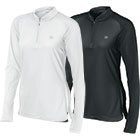
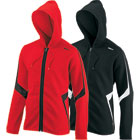
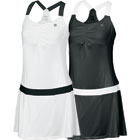
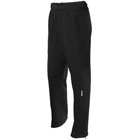
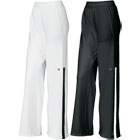
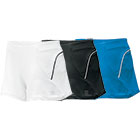
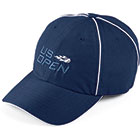
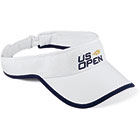
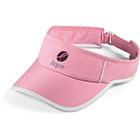
FOOTWEAR

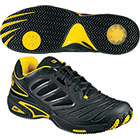
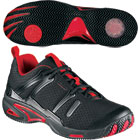
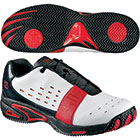
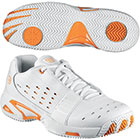
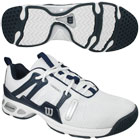
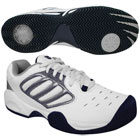
RACKETS
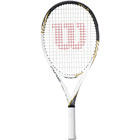
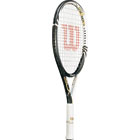
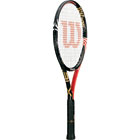




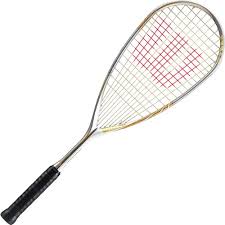
GLOVES
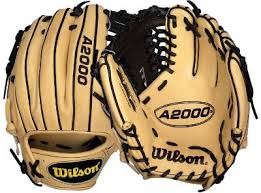
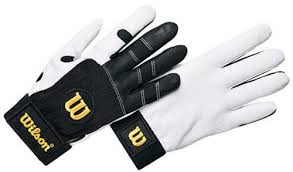
BAGS

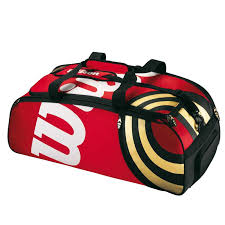

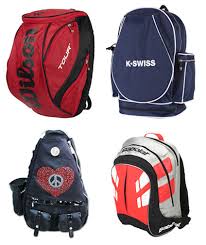
GOLF CLUBS
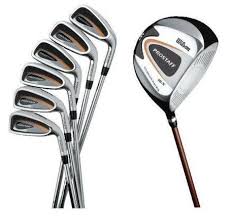
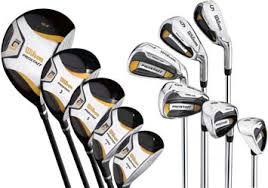

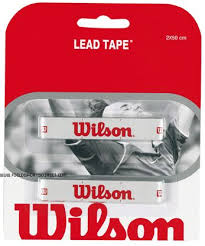
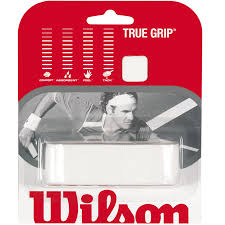




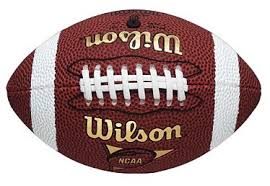
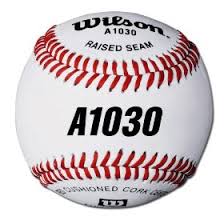

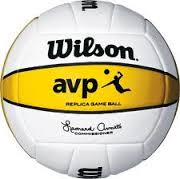
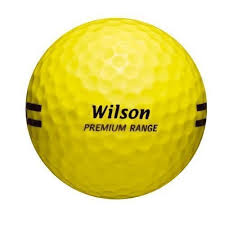
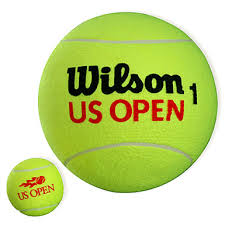





















FOOTWEAR






RACKETS



GLOVES
BAGS
GOLF CLUBS
ACCESSORIES
BALLS
Sponsorships
DAVID WRIGHT
DUSTIN PEDROIA
JOSE BAUTISTA
DERRICK ROSE
TOM BRADY
PADRAIG HARRINGTON

ROGER FEDERER
SERENA WILLIAMS
KERRI WALSH-JENNINGS
LAUREN LAPPIN
CAITLIN LOWE
MIKE SMALL





0 comments:
Post a Comment